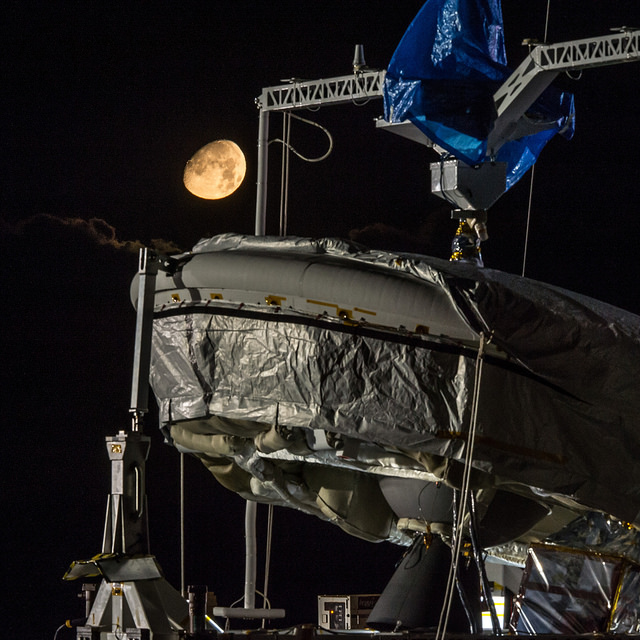NASA 'Flying Saucer' Launch Delayed by Rough Seas, Next Try Wednesday

An innovative saucer-shaped parachute that NASA scientists have dubbed their "flying saucer" will have to wait an extra 24 hours before launching on its latest test flight after rough ocean conditions delayed a planned launch today (June 2).
NASA's "flying saucer" for Mars landings, officially known as the Low-Density Supersonic Decelerator or LDSD, is an inflatable decelerator and parachute to test technologies that could one day allow spacecraft twice the size of the 1-ton Curiosity rover to reach the Martian surface. But NASA can only launch the LDSD prototype if weather and ocean conditions are right, and rough seas forced mission managers to delay the flight until Wednesday (June 3) at the earliest.
"Mission managers postponed tomorrow's scheduled launch of a high-altitude balloon carrying NASA's Low Density Supersonic Decelerator (LDSD) test vehicle because of unfavorable ocean conditions," NASA mission officials wrote in a status update late Monday. "The wave height is not conducive for safe recovery operations." [More Photos from NASA's 2nd LDSD Flying Saucer Test]
NASA is now aiming to launch the LDSD test flight on Wednesday at 7:30 a.m. HST (1:30 p.m. EST, 1730 GMT) from the U.S. military's Pacific Missile Range Facility in Kauai, Hawaii. You can watch the NASA "flying saucer" launch on Space.com, courtesy of NASA, beginning at 1 p.m. EST (1700 GMT).
This week's launch will mark NASA's second flight of the LDSD supersonic parachute to test new ways to deliver large spacecraft to Mars. On June 28, 2014, NASA launched the first LDSD test flight, which returning stunning video of its inflatable decelerator in space.
For the second LDSD test flight, a NASA balloon will carry the decelerator/parachute prototype up to an altitude of 120,000 feet (37,000 meters). Once there, it will be released and a rocket motor will kick in, launching the LDSD at supersonic speeds to a height of 180,000 feet (55,000 meters).
"Traveling at about three times the speed of sound, the vehicle's inner-tube-shaped decelerator, called a supersonic inflatable aerodynamic decelerator, will inflate and slow the vehicle," NASA officials wrote in a mission description. "Then, at Mach 2.35, its parachute will inflate and gently carry the vehicle to the ocean's surface."
Breaking space news, the latest updates on rocket launches, skywatching events and more!
NASA engineers and scientists hope the data collected by the LDSD test flight will help deliver larger rovers and payloads to Mars during future missions.
Email Tariq Malik at tmalik@space.com or follow him @tariqjmalik and Google+. Follow us @Spacedotcom, Facebook and Google+. Original article on Space.com.
Join our Space Forums to keep talking space on the latest missions, night sky and more! And if you have a news tip, correction or comment, let us know at: community@space.com.

Tariq is the award-winning Editor-in-Chief of Space.com and joined the team in 2001. He covers human spaceflight, as well as skywatching and entertainment. He became Space.com's Editor-in-Chief in 2019. Before joining Space.com, Tariq was a staff reporter for The Los Angeles Times covering education and city beats in La Habra, Fullerton and Huntington Beach. He's a recipient of the 2022 Harry Kolcum Award for excellence in space reporting and the 2025 Space Pioneer Award from the National Space Society. He is an Eagle Scout and Space Camp alum with journalism degrees from the USC and NYU. You can find Tariq at Space.com and as the co-host to the This Week In Space podcast on the TWiT network. To see his latest project, you can follow Tariq on Twitter @tariqjmalik.
